The world’s first comic book, Lascaux, was published in France 17,000 years ago. It was a single edition, printed on limestone, and arranged in a pair of strips over 128-feet long. The title refers to the medium (“lascaux” is French for “limestone”), but it is also the genre (cave drawings) as well as the specific work of art. Similarly, “pulp fiction” refers to magazines printed on paper made from wood pulp but later came to mean the tales themselves, eventually inspiring Quentin Tarantino to adopt the term as the title of his 1994 film Pulp Fiction.
Most reviewers refer to the Lascaux creators as “Cro-Magnons,” a generic designation which in this case might literally be true. The bones of the first so-called Cro-Magnons were found in a hole (“cro” in French) on property owned by a farmer named Magnon in a nearby town. Cro-Magnons are people of Magnon’s hole. More specifically, the creators of Lascaux were a loose collective of artists of the Neolithic Publishing Period who signed their work with a symbol resembling the head of a four-pronged pitchfork. This signature has been compared to a graffiti tag, but since it also appears in other caves of the region it probably denotes a clan or congregation and is mostly likely a corporate logo, similar to the globe Atlas Comics used before becoming Marvel in the 1960s. It may also be an umbrella logo like the circled “DC” icon that linked National Allied Publications with its affiliate branches All-American Comics and Detective Comics in the 1940s.
Since Lascaux was published before France passed its first law protecting authors’ rights in 1793, the artists’ heirs retain no proprietary rights. A court challenge could argue that the 1940 discovery of the cave signifies a new “first” publication, but since copyrights lapse into public domain after seventy years, the point is mute. Four Pronged Publishing went out of business millennia ago and so collects no royalties on the postcards, t-shirts, refrigerator magnets, and other gift shop memorabilia appropriating Lascaux artwork.
Legal issues aside, the work has influenced comic books for centuries. Reviewers often liken it to Michelangelo’s most acclaimed graphic novel, the Sistine Chapel. The comparison is apt, as the Lascaux artists also painted religious imagery on the ceilings of a temple while lying on their backs suspended by wooden platforms. The scope is also similar, with the largest bull drawing spanning seventeen feet. Michelangelo, however, worked in distinct panels, while Lascaux includes no formal frames or gutter, prefiguring Will Eisner’s use of open page space. The absence of captions and word balloons also influenced later works by Jim Steranko and Alan Moore.
Walt Disney borrowed animation techniques from Four Prongs too. Many of the horses and bulls in the Lascaux are drawn at angled perspectives with the closest front leg straight and the second front leg bent and slightly detached from the body to suggest motion. A single animal may be drawn multiple times in an overlapping row, with head or back end incomplete, to evoke forward progression—a technique copied by numerous artists suggesting the movements of speedsters Flash and Quicksilver. When viewed with Four Prongs candle technology (a hollowed rock filled with reindeer fat and a juniper wick), the moving animals flicker like nickelodeon images.
The artists also innovated crushed minerals for their palette, even for black, avoiding the charcoals favored by their contemporaries. Curators comment on the flawlessness of the artists as revealed by the lack of a single false or erased line in all Lascaux. This impression, however, may be due to the now invisible lines produced by one or more “pencilers” that later “inkers” effectively obscured as they finalized the pages. Credit is also due to the nuanced style of the colorists, whose muted amber bulls influenced Lynn Varley’s award-winning work in The Dark Knight Returns.
Sadly, after its republication in 1940, Lascaux was no longer preserved in its clay-sealed micro-climate—the geological equivalent of an acid-free mylar bag—and so it has been significantly downgraded from its former near-mint condition. As a result, reprints are flooding the market. Lascaux II—a painstakingly reproduced concrete tunnel located near the original—opened in 1983, Lascaux III is currently on tour, and Lascaux IV is in production.
While Lascaux has thrilled equine and bovine enthusiasts for thousands of years, casual readers should be prepared for a narrative told without human main characters. The comic book’s single human figure is located on the cave’s most inaccessible panel and, where many of the bulls and horses possess a slight and mildly Cubist quality of abstraction, the lone man is essentially a stick-figure with what may be a bird’s head and is most definitely a penis. This may in fact be the falcon-headed Horus or the ibis-headed Thoth, both of whom sojourned in Gaul before settling in the Nile valley. Fans of their adventures will also enjoy the comic books of ancient Egypt.
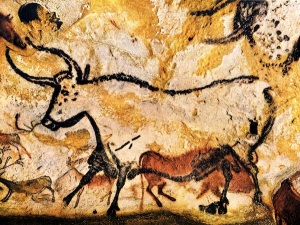
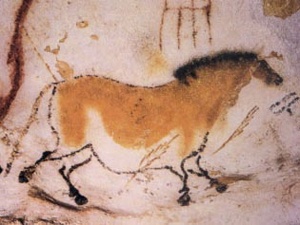
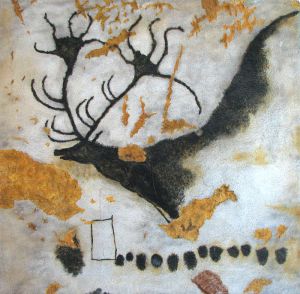
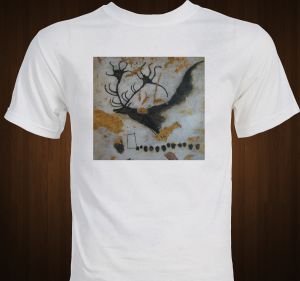
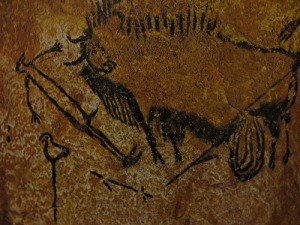
This is tremendous.
Many thanks, Matt.
I agree with Matt, Chris. Also, I bet it was fun to write. I wrote about some neo-Babylonian government functions in similarly modern terms over a decade ago and had a good time with it.
I have one semantic nitpick, however. The point is “moot,” not “mute.” I know this to be true, because I learned it from the Reverend Jesse Jackson on Saturday Night Live.
http://menino.com/question-is-moot.mov is the link to Jesse’s instructional video.
AGH! I thought I fixed that before posting it! I’m such a sucker for homonyms, or even near homonyms. My family routinely mocks me for my inability to distinguish the pronunciation of pull, pole, and pool. It has something to do with growing up in Pittsburgh, coupled with some strange brain wiring.
And, as long as we’re in copyediting mode, “cro” is NOT a French word for “hole.” It’s “creux,” which some English translator must have altered long ago.
Well, almost everyone fails “moot,” because “mute” kind of makes sense. No funny Pittsburgh talk is required for youse to mess that up. And “cro” is obviously more scientific looking — and just as important jingoistically, it’s less French.
Don’t even get me started on the near-extinct correct past tense of “to lead…”
Excellent article and excellent execution. In all seriousness, Lascaux probably is one of the best comix ever done, the draftsmanship is impeccable and the story is the oldest story ever told … the natural world.